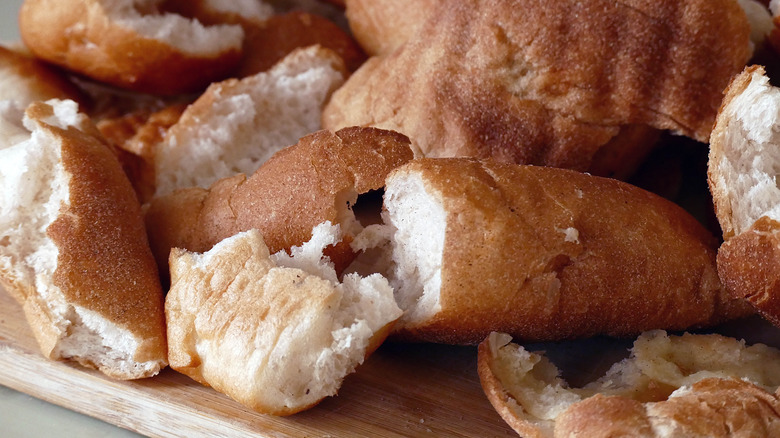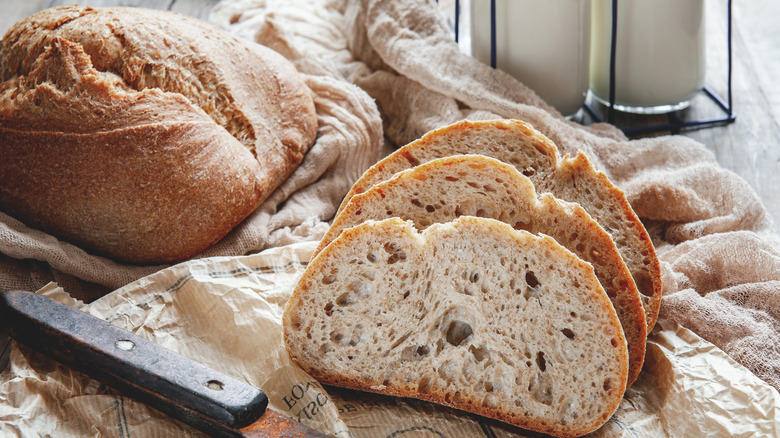The Scientific Reason Bread Gets Hard As It Stales
Stale bread is one of the most frustrating problems in a kitchen. There aren't many things better than a loaf of fresh bread, especially one with the perfect combination of a crispy exterior and a soft, fluffy interior. But bread — particularly that kind of rustic, crusty bread — is one of the fastest foods to lose its appeal. A nice loaf can turn stale, hard, and generally unappealing in a matter of days, or even hours. Worse yet, it's a difficult process to resist, as the different ways you can store bread to keep it fresh seem to have only a mild effect on how long it lasts.
So, why does bread get hard so quickly? It mostly comes down to two things, starch and moisture, and the way they interact with each other. Most people think bread goes stale because it loses moisture, and that is partially true. But, as even tightly wrapped loaves of bread show, inhibiting moisture loss still eventually leads to stale bread.
The real reason is that the structure and texture of bread are determined by a complicated chemical reaction between water and the starch molecules in wheat facilitated by the heat from cooking. High heat breaks down starch, which lets it absorb water better, producing a soft texture. However, as soon as bread starts to cool, this process reverses. As the starch rehardens, it pushes out some of the moisture, and it's the structure of starch that begins moisture loss in the first place.
Starch's crystalline structure hardens bread as it cools and dries
Starch is made up of two distinct molecules called amylose and amylopectin, which are suspended in a crystalline structure under normal circumstances. When exposed to heat, these molecules gradually turn into sugars, which naturally attract and absorb moisture. Above a temperature of 150 degrees Fahrenheit, the starches and water start to gelatinize, becoming firm but soft. That crystalline structure is why the starch rehardens when it cools, too, through a process called retrogradation.
Moisture does eventually leave the bread entirely through evaporation, which adds to the staling and makes it harder to reverse, but it's that retrogradation that's the key to why bread gets hard. That's why breads that are less rustic and enriched with ingredients like sugar and eggs tend to last longer and stay softer. The extra fat and sugar help the bread retain moisture better, making up for the hardening starch.
The connection between heat and starch structure is also why you can temporarily reverse bread going stale by reheating it. Even though the starch has started expelling water, it takes time to evaporate from the bread completely, so reheating breaks down the starch again and helps it reabsorb the moisture in a repeat of the chemical reaction that drove the initial cooking process. It won't be quite as good as fresh, but it's a lot better than losing your delicious loaf entirely.

